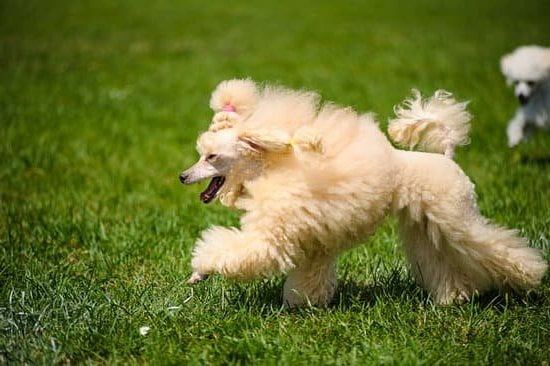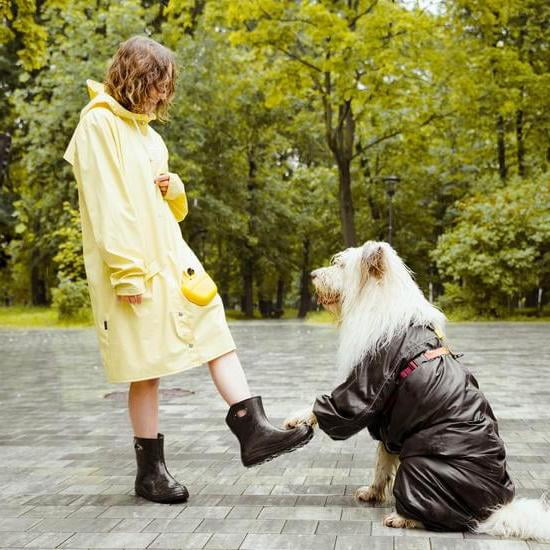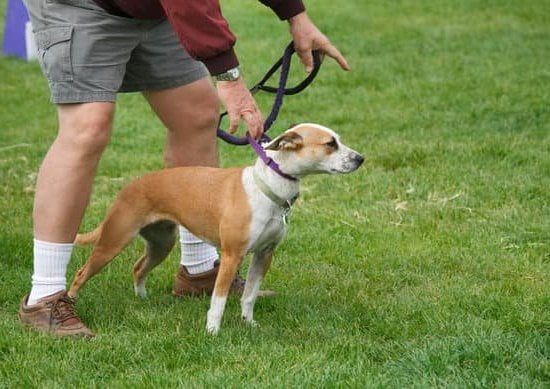Are you wondering how to train your dog with a clicker? Clicker training is a popular and effective method for teaching dogs new behaviors and reinforcing good behavior. In this article, we will explore the basics of clicker training, from choosing the right clicker for your dog to troubleshooting common issues that may arise during training. You will also learn step-by-step methods for teaching basic commands using a clicker and advanced techniques for more complex behaviors.
Clicker training is based on the principles of positive reinforcement, where desired behaviors are rewarded with a clicking sound followed by a treat or praise. The click serves as a clear signal to your dog that they have done something right, making it a powerful tool for communication during training sessions. This method can be used to teach new commands, modify unwanted behavior, and even train complex behaviors such as agility or obedience exercises.
Before delving into the specific steps of clicker training, it’s important to understand the basics of this approach. From choosing the right clicker for your dog to setting up a positive reinforcement environment for training, each aspect plays a crucial role in the success of your training sessions. By incorporating these fundamentals into your training routine, you can set the stage for effective and enjoyable learning experiences with your canine companion.
Understanding the Basics of Clicker Training
Clicker training is a positive reinforcement method that can be highly effective in teaching your dog new behaviors and commands. This training technique involves using a small handheld clicker device to make a distinct clicking sound, which serves as a signal for your dog that they have performed the desired behavior. In this section, we will delve into the basics of clicker training and how you can effectively use it to train your dog.
What Is Clicker Training?
Clicker training is based on the principles of operant conditioning, where the click sound acts as a bridge between the desired behavior and the reward. When your dog performs a specific action or behavior that you want to reinforce, you use the clicker to mark that exact moment, followed by giving them a reward such as a treat or praise.
Over time, your dog learns to associate the click with receiving a reward, which strengthens the likelihood of them repeating that behavior in the future.
Getting Started With Clicker Training
To begin clicker training your dog, it’s important to first introduce them to the sound of the clicker and establish a positive association with it. You can do this by simply clicking the device and immediately offering your dog a treat.
Repeat this several times until your dog visibly responds positively to the sound of the clicker. Once they understand that the click signifies something good is coming, you can then start using it during training sessions to mark their desired behaviors.
The Benefits of Clicker Training
One of the key benefits of using a clicker for training is its ability to provide clear and precise feedback to your dog in real-time. The distinct sound of the click helps eliminate any confusion or ambiguity about which behavior is being rewarded, making it an excellent tool for teaching new commands and shaping desired behaviors.
Additionally, clicker training helps strengthen the bond between you and your dog through positive reinforcement, creating a more enjoyable and rewarding learning experience for both parties involved. By incorporating this method into your training routine, you’ll likely see improvements in your dog’s responsiveness and overall obedience.
Choosing the Right Clicker for Your Dog
When it comes to clicker training for dogs, choosing the right clicker is an important first step. The clicker will act as a marker to indicate to your dog when they have performed a desired behavior. There are a few different types of clickers available, so it’s essential to select one that will work best for your dog.
One of the most common types of clickers is a box clicker, which produces a sharp and distinct sound when pressed. This type of clicker is great for dogs who respond well to clear and consistent cues. Another option is a button clicker, which requires less pressure and may be better for dogs with more sensitive hearing or those who are easily startled by loud noises.
It’s also important to consider the size and design of the clicker. If you have a small breed dog, you may want to choose a smaller clicker that is more comfortable to hold and use during training sessions. Some clickers also come with wrist straps, making it easier to keep track of during training sessions or outdoor activities.
Additionally, some trainers prefer using a verbal marker instead of a physical clicker. This involves using a specific word or sound as the cue instead of a clicking device. This can be useful for owners who may have difficulty using a physical clicker consistently or who prefer not to rely on an additional tool during training sessions.
Overall, the key is to choose a clicker that feels comfortable in your hand and produces a sound that is clearly heard by your dog. Ultimately, every dog is different, so it may be helpful to try out different types of clickers to see which one works best for your furry friend.
| Types | Considerations |
|---|---|
| Box Clicker | Produces distinct sound; suitable for dogs responding well to consistent cues |
| Button Clicker | Requires less pressure; ideal for dogs with sensitive hearing or startle easily |
| Verbal Marker | Suitable for owners who have difficulty using physical clickers consistently or prefer not relying on additional tools |
Setting Up a Positive Reinforcement Environment for Training
When it comes to training your dog with a clicker, setting up a positive reinforcement environment is key to success. Positive reinforcement involves rewarding your dog for good behavior, which encourages them to repeat that behavior in the future. This method of training has been proven to be effective and is especially important when using a clicker.
One important aspect of creating a positive reinforcement environment is to ensure that you have plenty of high-value treats on hand. These treats should be something that your dog finds particularly enticing and is willing to work for during training sessions. This could be small pieces of cooked chicken, cheese, or commercial dog treats. The key is to find something that motivates your dog and makes them eager to earn the reward.
Another crucial element of creating a positive reinforcement environment is timing. It’s important to click the clicker at the exact moment your dog performs the desired behavior, followed immediately by giving them the treat. This creates an association between the clicking sound and the reward, making it clear to your dog what they are being rewarded for.
Finally, it’s essential to eliminate any potential distractions during training sessions. Find a quiet, comfortable space where you and your dog can focus solely on the training at hand. This will help ensure that your dog can fully concentrate on learning the commands and behaviors you are teaching them.
In summary, by providing plenty of high-value treats, mastering your timing with the clicker, and minimizing distractions during training sessions, you will be able to create a positive reinforcement environment that sets up both you and your dog for success in clicker training.
| Aspect | Description |
|---|---|
| Treats | Have plenty of high-value treats available during training sessions |
| Timing | Mastering the timing with the clicker and treat delivery for effective communication with your pet |
| Minimizing Distractions | Find a quiet and comfortable space where you and your pet can focus solely on training |
Step-by-Step Guide to Teaching Basic Commands Using a Clicker
Clicker training is a popular and effective method for teaching dogs new behaviors and commands. In this section, we will outline a step-by-step guide to using a clicker to train your dog basic commands. By following these steps, you will be able to effectively communicate with your furry friend and strengthen the bond between you and your pet.
Step 1: Familiarize Your Dog With the Clicker
The first step in clicker training is to familiarize your dog with the sound of the clicker. To do this, simply click the device and immediately give your dog a treat. Repeat this process several times until your dog associates the sound of the clicker with receiving a reward.
Step 2: Choose a Basic Command to Focus On
Once your dog is comfortable with the clicker, choose a basic command to work on, such as “sit” or “down.” Start by giving the command and using the clicker to mark the moment when your dog performs the desired behavior. Immediately follow up with a treat to reinforce the positive association.
Step 3: Practice Consistently and Gradually Increase Expectations
Consistency is key when it comes to clicker training. Practice the chosen command regularly, gradually increasing expectations as your dog becomes more proficient. Remember to use the clicker each time your dog successfully follows the command, followed by a treat as positive reinforcement.
By following these steps, you can effectively train your dog using a clicker. With patience and consistency, you will soon have a well-behaved and responsive canine companion.
Troubleshooting Common Issues With Clicker Training
When it comes to clicker training your dog, you may encounter some common issues along the way. However, with the right approach and understanding, these challenges can be overcome. Here are some tips for troubleshooting common issues with clicker training.
One common issue that owners may face is their dog becoming confused or distracted during training sessions. To address this, it’s important to ensure that you are conducting training in a quiet and comfortable environment free from distractions.
Additionally, using high-value treats as rewards can help keep your dog focused on the task at hand. If your dog seems confused by the clicker itself, you may need to spend some time conditioning them to understand that the sound of the clicker signifies a reward.
Another issue that some pet owners encounter is their dog becoming fearful or anxious in response to the clicker. This can happen if the sound of the clicker is too loud or startling for your dog. To address this, try using a softer clicker or muffling the sound by wrapping it in a cloth. Gradually increasing the volume of the click over time can also help desensitize your dog to the noise.
Finally, some dogs may exhibit behaviors such as barking or jumping when they hear the clicker. In these cases, it’s important to reinforce calm and attentive behavior during training sessions. By consistently rewarding calm behavior and ignoring unwanted behaviors, you can help shape your dog’s response to the clicker in a positive way.
By understanding how to train my dog with a clicker and addressing common issues with patience and consistency, you can set yourself up for success in using this effective training tool.
Advanced Clicker Training Techniques for More Complex Behaviors
Now that you have mastered the basics of clicker training with your dog, it’s time to take it up a notch and tackle more complex behaviors. Advanced clicker training techniques can help you teach your dog impressive tricks and improve their overall behavior in various situations.
One of the most effective advanced techniques is shaping, which involves breaking down a complex behavior into smaller, manageable steps. With shaping, you can use the clicker to mark and reward each incremental progress your dog makes toward the desired behavior. This method requires patience and precision, but it can lead to remarkable results.
Another advanced technique is capturing, where you wait for your dog to naturally exhibit a certain behavior and then use the clicker to mark and reinforce it. This technique is particularly useful for teaching behaviors that your dog may not perform on cue, such as sneezing or yawning. By capturing these natural behaviors and associating them with the clicker, you can expand your dog’s repertoire of trained behaviors.
Finally, targeting is an advanced clicker training technique that involves teaching your dog to touch specific objects or areas with their nose or paw. This behavior can be useful for agility training or simply for fun tricks. By using the clicker to mark and reward when your dog successfully targets an object, you can build their confidence and coordination.
By incorporating these advanced clicker training techniques into your training sessions, you can continue to strengthen the bond with your dog while also challenging them mentally and physically. Remember to be patient and consistent in your training, and always keep the sessions positive and rewarding for your furry friend.
Incorporating Clicker Training Into Everyday Life With Your Dog
Clicker training can be a very effective tool for shaping your dog’s behavior and incorporating it into your everyday routine can help reinforce the positive behaviors you’ve worked on together. Here are some tips on how to seamlessly integrate clicker training into your daily life with your furry friend:
- Use the clicker during meal times: Whether you’re working on basic obedience commands or just reinforcing good behavior, using the clicker during meal times is a great way to incorporate training into your dog’s daily routine. For example, waiting patiently for their food or sitting before receiving their meal can be reinforced with the clicker.
- Take the clicker on walks: Incorporating clicker training into walks allows you to work on loose leash walking, heel position, or even recall. Use the clicker to mark and reward desired behaviors while out and about, such as walking without pulling or coming when called.
- Practice during playtime: Incorporating the clicker into playtime activities is a fun way to make training feel like a game for your dog. You can use it to reinforce commands like “drop it,” “leave it,” or “fetch.” This also helps strengthen the bond between you and your pet.
By integrating the clicker into these everyday activities, you are providing consistent positive reinforcement and strengthening the communication between you and your dog. Remember that patience and consistency are key when using this training method, so stay dedicated to practicing regularly for best results in all aspects of daily life with your canine companion.
The Benefits of Clicker Training for Your Dog’s Behavior and Overall Well-Being
Clicker training is a popular and effective method for teaching dogs new behaviors and reinforcing positive actions. This training technique has numerous benefits for your dog’s behavior and overall well-being. Here are some of the key advantages of using a clicker to train your dog:
- Clear Communication: The clicker provides a clear and consistent signal to your dog that they have performed the desired behavior. This precise communication helps your dog understand exactly what action they are being rewarded for, making the training process more efficient.
- Positive Reinforcement: Clicker training is based on the principle of positive reinforcement, which involves rewarding desired behaviors with treats or praise. This approach helps to build a strong bond between you and your dog, as well as boosting their confidence and motivation to learn.
- Reduced Stress: Unlike punishment-based training methods, clicker training focuses on rewarding good behavior rather than correcting bad behavior. This creates a low-stress learning environment for your dog, leading to a more enjoyable training experience for both of you.
By understanding these benefits, you can see how clicker training can significantly improve your dog’s behavior and overall well-being. Using the right techniques and consistent practice, you can create a positive and enriching learning experience for your furry friend.
Whether you are teaching basic commands or working on more complex behaviors, incorporating clicker training into your dog’s routine can lead to long-lasting positive changes in their behavior while also strengthening your relationship with them. With dedication and patience, you can enjoy the rewards of clicker training by watching your dog flourish in their obedience and confidence.
Remember that every dog is unique, so it is essential to tailor the clicker training approach to suit their individual needs and personality. With time and effort, you will likely find that clicker training becomes an enjoyable activity that brings you closer to your canine companion while positively impacting their behavioral development.
Conclusion and Next Steps for Furthering Your Clicker Training Skills With Your Dog
In conclusion, clicker training is a highly effective and positive way to train your dog. By using a clicker, you can clearly communicate with your pet and reinforce desired behaviors in a gentle manner. As you have learned from this article, understanding the basics of clicker training and setting up a positive reinforcement environment are essential for successful training sessions. Additionally, choosing the right clicker for your dog and troubleshooting common issues will help make the training process smoother.
As you continue to train your dog with a clicker, it’s important to remember that patience and consistency are key. Whether you are teaching basic commands or more advanced behaviors, the step-by-step guide provided in this article offers a solid foundation for your training sessions. By incorporating clicker training into everyday life with your dog, you can strengthen the bond between you and improve their behavior in various situations.
For those looking to further their clicker training skills with their dog, there are advanced techniques available for teaching more complex behaviors. Additionally, seeking out professional guidance or attending group classes can provide valuable support as you continue on your journey.
Ultimately, the benefits of clicker training go beyond obedience – it can enhance your dog’s overall well-being by promoting mental stimulation and confidence. Embracing the principles of positive reinforcement will not only improve your relationship with your pet but also make training an enjoyable experience for both of you.
Frequently Asked Questions
Is Using a Clicker Good for Dog Training?
Using a clicker for dog training can be very effective. The sound of the clicker can quickly and accurately communicate to your dog when they have performed the desired behavior, making it easier for them to understand what you’re asking of them.
How Do You Clicker Train a Dog for Beginners?
To clicker train a dog as a beginner, start by associating the sound of the clicker with a reward, such as treats. Then, use the clicker to mark and reinforce positive behaviors like sitting or staying. Be consistent and patient as you work with your dog.
How Do You Teach a Dog to Come With a Clicker?
Teaching a dog to come using a clicker involves conditioning them to associate the sound of the clicker with the action of coming to you. Start in a quiet environment, click when they move toward you, and reward them when they reach you. With regular practice, your dog will learn to come when they hear the clicker.

Welcome to the blog! I am a professional dog trainer and have been working with dogs for many years. In this blog, I will be discussing various topics related to dog training, including tips, tricks, and advice. I hope you find this information helpful and informative. Thanks for reading!





